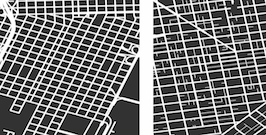The homeless population in both the City and County of Los Angeles has increased by 12 percent in the past two years. There are 9,535 temporary shelters across the city, including tents, cars and makeshift encampments, that are inhabited by homeless people. Soaring rents, low wages and high unemployment have exacerbated the problem. Despite attempts to combat homelessness by increased funding, political backing to build housing has proved insufficient for the changes necessary.
So L.A. local and student architect Tina Hovsepian decided to do something about the problem. She developed a solution to the lack of infrastructure to house the homeless by creating a product made out of cardboard that was not only inexpensive and durable enough to create temporary housing for the homeless, but also cheap, strong, well-insulated and recyclable. The folding pattern provides structure with surprising stability, enabling the structure to resist greater loads of impact and wind.
Hovsepian now supervises the growth and implementation of her Cardborigami shelters to homeless people all over the world. Her project seeks to further address the root causes of homelessness, as well as aid the transition from temporary shelters to more stable lives through the provision of mental healthcare, job search assistance and placement in low-income housing.
Read the Full Story Here (via GOOD)
Here’s what else we’re reading:
Bay Area Contest for Creative Solutions

Photo: Next City
The Bay Area frequently combats challenges resulting from climate change, including flooding and sea-level rising. With a lack of solutions from traditional channels, the Rockefeller Foundation has announced a contest aimed at designers, policy-makers and developers to encourage creative types to invent climate change solutions for the San Francisco area. (via WDRB)
New Tool for Comparing City Density

Photo: Next City
Cities with long blocks lack the advantages that cities with short blocks provide to incubation, experimentation, and small enterprises. Geoff Boeing’s Street Network Visualization project provides a snapshot of a city’s street grid density, allowing viewers to easily compare two cities’ street networks. (via Next City)


